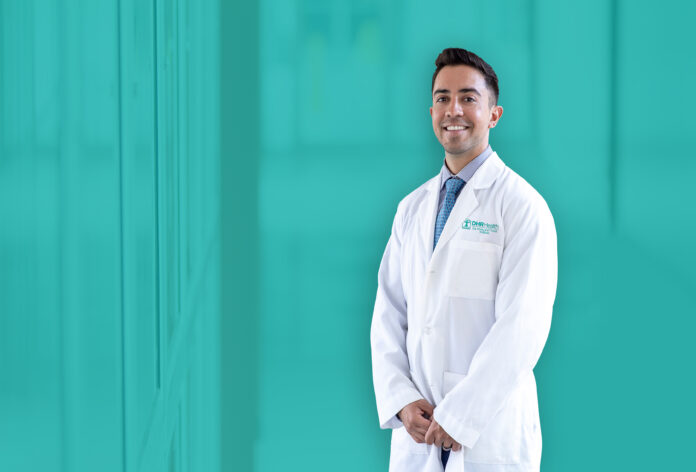
By: Dr. Melecio “Mel” Jesus Medina
DHR Health Ear, Nose and Throat
The most common surgery in pediatrics is the placement of tympanostomy tubes in the ear. One of the most common visits to the primary care physician in children aged 6 months to 12 years old is related to ear infections also known as “Acute Otitis Media.” The symptoms of an infection or fluid in the middle ear typically begin with nasal congestion, runny nose, fever, ear pain, hearing loss, and fussiness. Otitis media may lead to difficulties with speech, learning, attention, and sleep. Recurrent ear infections often lead to repeated visits to the doctor’s office which can be frustrating for the patient or caregiver. Diagnosis of an ear infection can be made by the primary care physician simply by looking in the ear to evaluate for a bulging eardrum.
Adults can often be affected by otitis media as well. Regardless, initial treatment for an ear infection should be with oral antibiotics for 10 days. It is normal for fluid behind the ear drum to remain for a few weeks to months after completing treatment with antibiotics. It is also common to see fluid in the middle ear without evidence of infection. In this instance, it does not need to be treated with antibiotics and will often resolve on its own over time.
So, when is it time to place ear tubes?
The placement of ear tubes is done by an ENT physician and should be considered if the patient has had one of the following:
- greater than 3 ear infections in 6 months
- greater than 4 ear infections in 12 months
- or persistent fluid in the ear for over 3 months causing hearing loss.
This procedure is done under general anesthesia in children and in the office in adults. It takes approximately 5 minutes to perform with minimal to no down time. After the placement of ear tubes, the frequency of ear infections decreases significantly which helps decrease visits to the physician’s office, decrease the use of oral antibiotics, and improve hearing.
After placement of ear tubes any persistent or future infections are treated with topical ear drops which minimizes the risks and side effects of oral antibiotics. New guidelines do not require patients to wear ear plugs when showering or swimming after placement of tympanostomy tubes. Ear tubes are temporary and often fall out on their own after one year.
The most common cause of hearing impairment in children is related to otitis media. It is important that patients with speech delay or learning difficulties be evaluated by an ENT promptly to ensure there is no hearing loss or fluid in the ears that could be contributing to their delay. Hearing tests can be done in our office to properly diagnose and treat these patients.
If you or a family member are having trouble with the ears contact the DHR Health Ear, Nose and Throat Institute located at the DHR Health Medical Tower located at 1100 East Dove Avenue, Suite 402 in McAllen. To make an appointment, please call (956) 362-8125.




